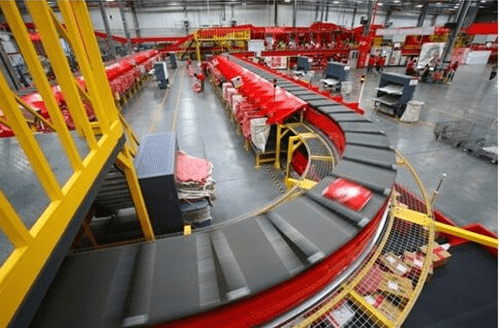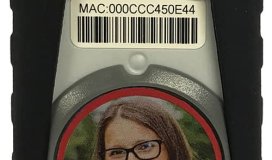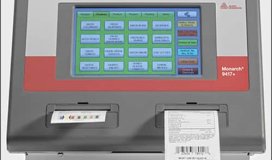Two companies have begun testing a new Internet of Things (IoT)-based solution from Barcoding Inc., leveraging technology from telematics provided by CalAmp that aims to fill the gaps in traditional RFID-based supply chain visibility—namely, when goods are in transit. Barcoding's Active Asset Tracker (AAT) solution employs CalAmp's sensor technology—the SC1004 sensor device and Bluetooth Low Energy (BLE) enabled iOn Tag—to allow Barcoding's customers to view, in real time, the locations and conditions of assets and cargo, even in places where RFID technology infrastructure isn't feasible.
The U.S. companies currently testing the technology are a waste-disposal organization and a high-value goods logistics company. Both firms have asked to remain unnamed.

Barcoding Inc.'s AAT solution traditionally leverages active RFID-based sensors that transmit data regarding the locations of the goods and assets to which they are attached, explains Tom O'Boyle, Barcoding Inc.'s director of RFID. The solution helps companies, such as manufacturers, logistics providers and retailers, manage the movement, storage and condition of goods passing through facilities. However, once RFID-tagged goods are loaded onto a truck, and until they are received at another location with the necessary RFID receivers or other location-based technology infrastructure, they are not visible to the software.
As a telematics company, Irvine, Calif.-based CalAmp offers solutions that capture data about shipments from smart sensor devices and tags far beyond RFID receivers. Its customers use the CalAmp solution for safety and compliance, as well as for supply chain visibility, and include pharmaceutical companies and manufacturers and retailers of perishable foods. The CalAmp SC1004 tag comes with a built-in sensor, as well as GPRS, GPS and Wi-Fi functionality, in addition to the iOn Tag's BLE feature. In that way, the device continues to forward data about its location and environment, wherever it may be, using cellular connections.
With the new solution, data transmitted by the SC1004 and iOn Tags is captured on CalAmp's SC iOn Command Portal. The software analyzes the data and reports actionable business intelligence back to the user. For instance, says Jeff Newman, CalAmp's VP of business development, the CalAmp SC1004 device can be placed inside a cargo container. When combined with the iOn Tag smart sensors at the pallet level, information including temperature and humidity, as well as shock or light, are gathered to better capture incidents, such as a fallen box or pallet, or the opening of a container (based on the presence of light).
The software stores the historical data, provides analytics and then, through integration, can forward this information to Barcoding's AAT software, which displays that data and can alert the company's management. Users, Newman says, "can create a whole set of perimeters around the cargo and create a history of environmental conditions," for instance, as well as its real-time location.
CalAmp's SC1004 and iOn Tagscan also leverage the BLE functionality to create a parent-child relationship for tagged containers, pallets and products moving through a supply chain. For instance, a "parent" SC1004 tag can be affixed inside a container, and the iOn Tags can be attached to pallets or cartons of goods loaded within that container. In that way, the parent SC1004 can forward data to the server, including the ID numbers of its child tags and the locations and conditions reported by each. If an item were removed from the container, the child iOn Tag would no longer be detected.

The CalAmp software forwards data to the AAT software, which can be provided via Barcoding's portal known as RFID RealView. Thus, if an unexpected or unauthorized event were to occur, the AAT software could forward an alert to the appropriate party.
The CalAmp software also enables users to set up dedicated transit paths known as shipping lanes, Newman says. Those lanes represent a set of rules indicating where a particular product is intended to go, where it may stop and for how long. If a violation occurs, such as a tag transmission report from a location that deviates from the path, or an unscheduled delay, an alert can be issued.


